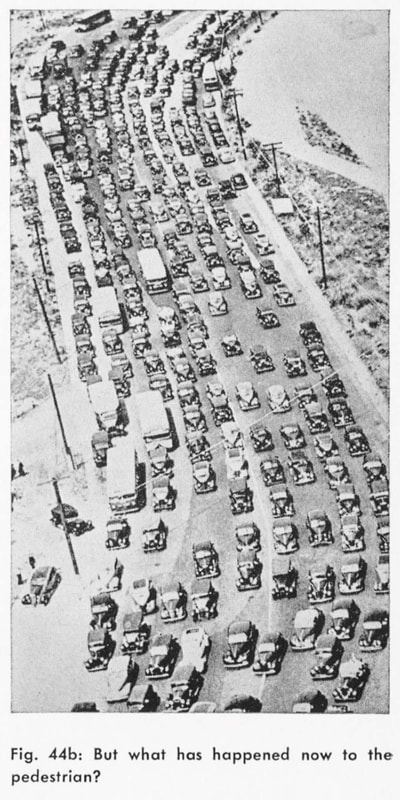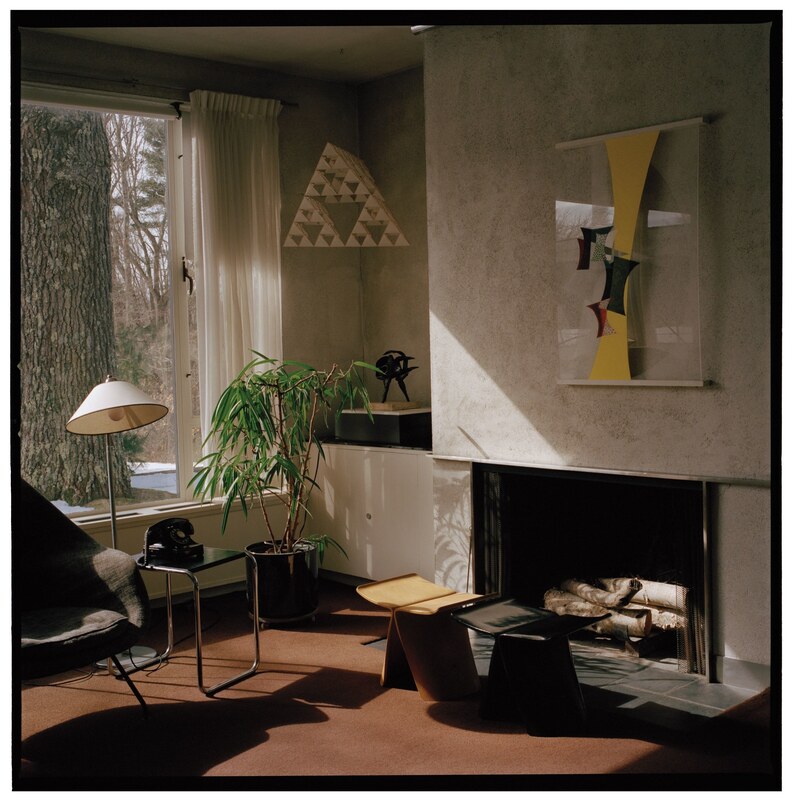|
When faith in the "Modern Movement" collapsed, Walter Gropius' work was dropped from the canon of architectural discourse. This was a mistake. On the right is an image of Gropius' living room published in the New Yorker from a 2019 retrospective, titled "The Man Who Built the Bauhaus." On the left is a plate from Gropius' own retrospective, The Scope of Total Architecture, which has been out of print since 1974. Gropius had a lot more to offer than simply a Bauhaus pedagogy or style, however influential those were, and much of what is being forgotten or ignored, shouldn't be. Walter Gropius’ legacy as the originator of the Bauhaus is fundamental to the narrative of any Modern Architecture survey. Curiously, at least at the University of Texas School of Architecture, his involvement outside of the Bauhaus is little discussed and does not feature in the curriculum. The fact that he has fallen from favor is corroborated by the fact his late-life retrospective, Total Scope of Architecture, was last published in English in 1974. None of this would be worth mentioning if his ideas did not matter anymore, but the opposite seems to be true. Take, for example, his campaign against the automobile, which he began in earnest in the 1940s, or his insistence that the education of architects should align closely with professional practice. Both are still pressing issues today, in 2019. This paper will argue that there is reason to reintroduce Gropius’ thought, at least in part—as conveyed through the Total Scope of Architecture—into the canonical history of Architectural discourse. My inquiry centers around an exploration of themes in Gropius writing. The purpose is twofold. On the one hand, simply to re-evaluate what I find to be relevant observations, and on the other, to suggest possible reasons why these observations seem to have fallen from favor. The line of inquiry I take is roughly keyed to the following questions. I suspect the answer hangs in the balance. The questions Gropius asks are no longer relevant. The answers Gropius presents to these questions are no longer valid. The discipline is no longer interested in these kinds of questions. Gropius’ involvement with CIAM is revealing. The prevailing narrative suggests that Gropius was cast aside with the Modern Movement, but on closer investigation this is unconvincing. First of all, Gropius arguments are nuanced enough that they persist despite a number of flaws evident in retrospect. Moreover, if anyone were to be discarded with the Modern Movement it should be Corbusier—the founder of CIAM and its self-appointed spokesman. This has not happened. Instead, Corbusier has enjoyed continuous popularity (evidenced both in UTSOA curricula and in publishing data), which implies that the issue with Gropius had less to do with his stature as a Modernist — which would have affected Corbusier’s appeal as well — but more to do with the kind of architectural thinking that predominated after the Modernist faith was undermined. When we associate his later work only with a bygone era of utopian dreams, à la Ville Radieuse, or to remember him only as the progenitor of the Bauhaus, we do a disservice to ourselves and to future generations of architects as we risk losing a powerful voice and a rigorous thinker who tackled the dilemma of architecture in a rapidly industrializing society head-on, with commendable courage ... read the entire paper here. *
|
WritingArchives
January 2021
Categories
All
|


